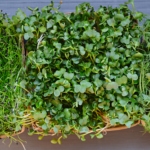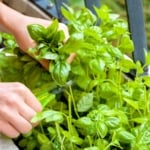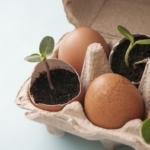Create An Indoor Herb Garden
Bring your herbs inside and keep them thriving all winter long with these helpful hints!
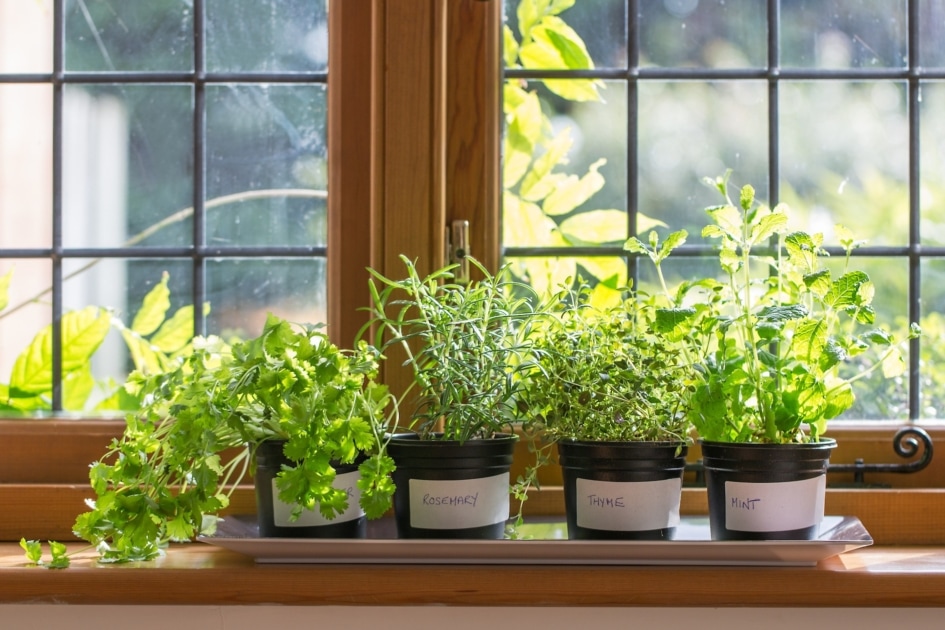
For gardeners who like to cook, parting with our most flavorful vegetables in the garden, our spices and herbs, can be a hard task at the end of each growing season. However, those among us who can’t seem to let go of the feeling of green and the taste of summer hold onto our herbs by bringing them indoors just before we put our gardens to sleep. Growing herbs indoors requires some work, but is well worth the fresh flavor they add to meals and the sweet aroma they add to your home.
Which Herbs Grow Well Indoors?
Some popular herbs that are simple to grow indoors include lemongrass, chives, mint, parsley, oregano, thyme, rosemary, coriander
Lemongrass, chives, and mint are perhaps the easiest to grow. They are hardy, require less light and attention than other herbs, and are the most prolific. Parsely is another easy herb to grow that doesn’t need a lot of light. It is a slow grower, however, so you won’t be able to get as many clippings from it as from some other herbs. Light-loving herbs include oregano, thyme, and rosemary so make sure you have a nice sunny spot to place them in and are prepared to bring in additional lighting if you want a big harvest. Another popular herb is Vietnamese coriander. Coriander is actually the seed of the plant, so you will have to wait for it to flower and seed before harvesting. But if you like Indian or Mexican-style dishes, coriander is a must-have.
Starting Your Indoor Herb Garden
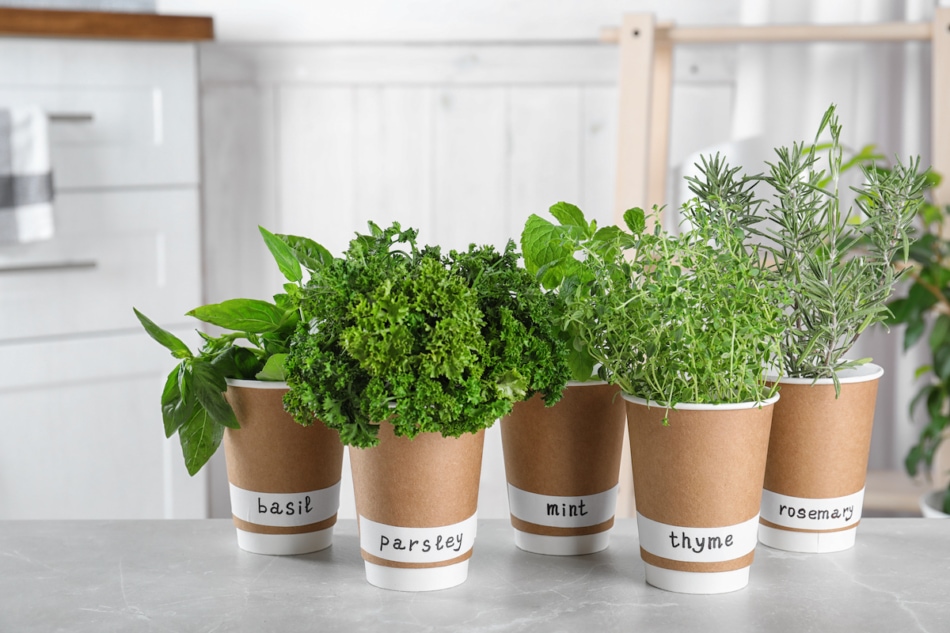
There are three basic ways you start your aromatic indoor garden:
- start herbs from seed
- transplant already established herbs from your outdoor garden or
- purchase herbs from your local greenhouse
If you prefer not to spend money when you don’t have to, you will probably opt for method number one or two.
Starting from seed is simple, but it can be a long, slow process that may not provide you with herbs until they are ready to be planted outside. I prefer to take my herbs right from the ground. The best time to pot your herbs up is before the first hard frost. Select the healthiest plants from the garden, checking very carefully to make sure they are disease-free.
You will want to plant your herbs in separate pots. Even more importantly, you must gradually acclimate your new house-guests to the conditions of indoor living, similar to how you would harden off your inside plants in the spring just before planting them. “Softening” your herbs means getting them used to less light. This can be done by introducing your herbs to partial shade for about two weeks, then deeper shade for another week until finally bringing them indoors. Once indoors, you may want to keep them inside only at night at first, to let them get used to the change in temperature. Although this seems like a lot of work, it is the best way to ensure the plants aren’t too traumatized by the change in conditions, and their growth and production aren’t too greatly affected.
A quicker, easier way to get your herb garden started is to simply get them from your local greenhouse. This is especially helpful if it’s late in the autumn season, and you have already had a few frosts in your area. Make sure to buy healthy-looking plants that haven’t already been growing outside, or you will have to acclimate them. Try to choose herbs potted in their own containers.
Important Tips For Indoor Herbs
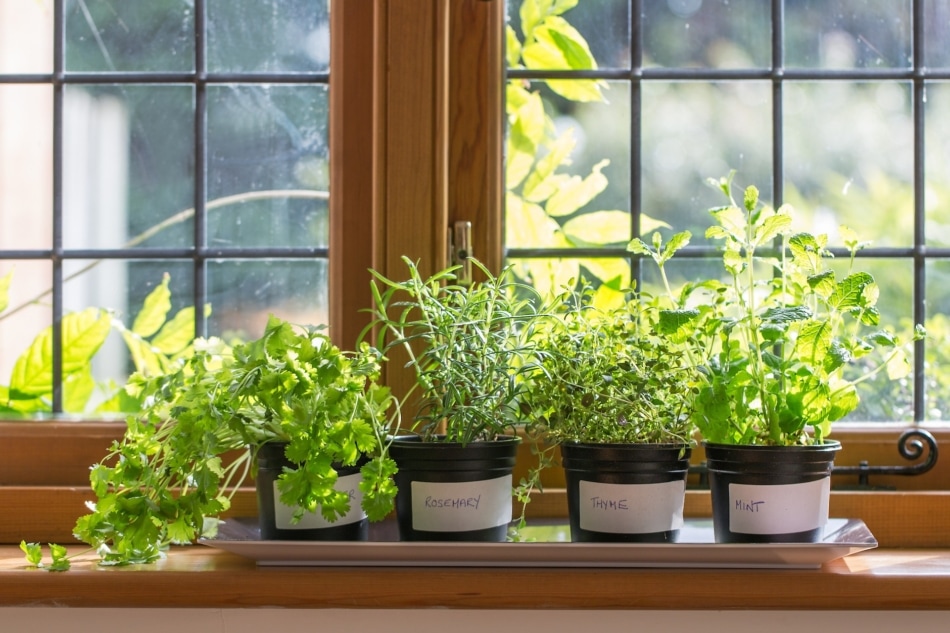
As with growing any other kind of garden, you will want to keep in mind the following important tips:
- Provide enough light. Like other garden plants, herbs need at least six hours of direct sunlight each day. Certain herbs — like rosemary, parsley, thyme, and mint — can tolerate partial shade. Because it can be challenging to provide enough light indoors, providing your herbs with extra light can really help their growth. Even next to a nice sunny window your herbs will appreciate twelve to fourteen hours of light each day. A simple, fairly inexpensive option would be to use fluorescent lights, which can be purchased at any hardware store. Make sure to hang the lights about 6” above the plants and check them regularly to ensure that they are not growing too “leggy” toward the light.
- Plant herbs in organic, well-drained soil. Herbs like nutrient-rich, well-drained soil. If you are potting up from your garden, be sure to include a good mixture of soil from your garden and potting soil, as garden soil alone might become too compact in the pot. You can also feed your herbs. Liquid fish emulsion makes a nice organic fertilizer. You should feed herbs once a week when they are actively growing (spring, and summer) and less often in the winter.
- Water enough but not too much. It’s easy to over-water when taking care of indoor plants, so it’s important to be careful to give your herbs only the amount of water they really need. Water them only when they are dry to touch. Water each potted herb thoroughly at the base of the plant, until the water comes out of the bottom of the pot. Use room temperature water, rather than cold water straight from the tap.
- Provide proper air-circulation. To help prevent disease and give your plants enough room to stretch out their arms, so to speak, make sure to give them to give them proper air-circulation. This means, don’t place them too close together, too close to other house plants, or wedged in a corner somewhere. On nice warm days, open your windows to let the breeze in. You might even want to turn fan on occasionally. The fresh air will do you good too!
- Cut back often. Believe it or not, herbs don’t mind getting their leaves clipped often. That is why we grow them isn’t it? Cutting back your herbs regularly helps stimulate leaf production. For potted herbs, make sure to trim the tips or tops of the plant and not cut back all the way to the base. Keep in mind, though, that winter is a natural time for rest and sleep for all living things. Don’t expect too great a harvest from your herbs during their “off-season”.
Growing herbs indoors is a great way to enliven your home, enrich your meals and keep you connected to the life of the garden throughout the cold months of winter. Make sure to choose the herbs you like best to grow and don’t be afraid to experiment with some new ones you’ve never heard of or tried yet.
Sherie Blumenthal
Sherie Blumenthal is a Food Access Coordinator with Lots to Gardens, an urban gardening and community nutrition initiative sponsored by St. Mary’s Health System in Lewiston, Maine.


